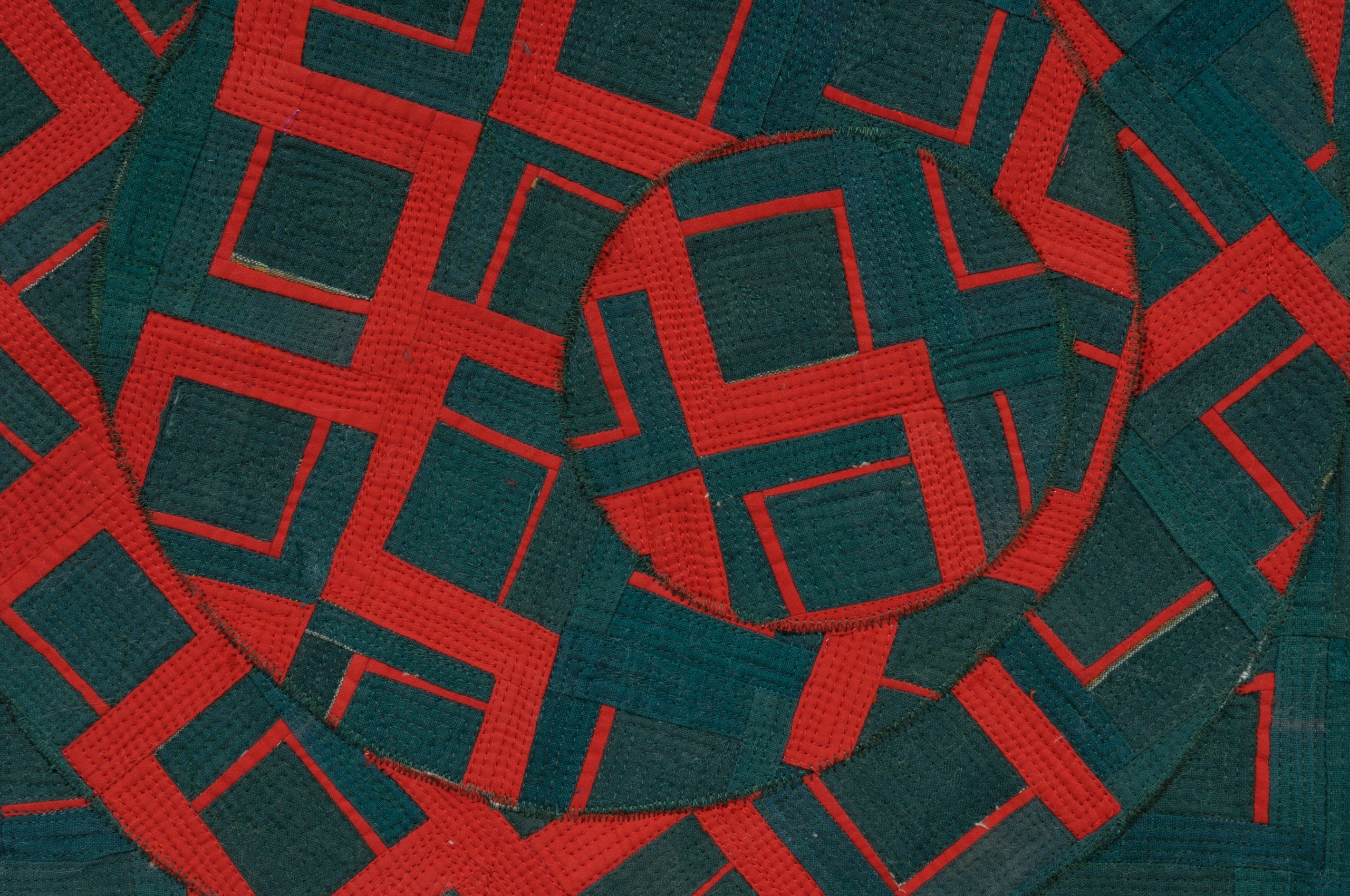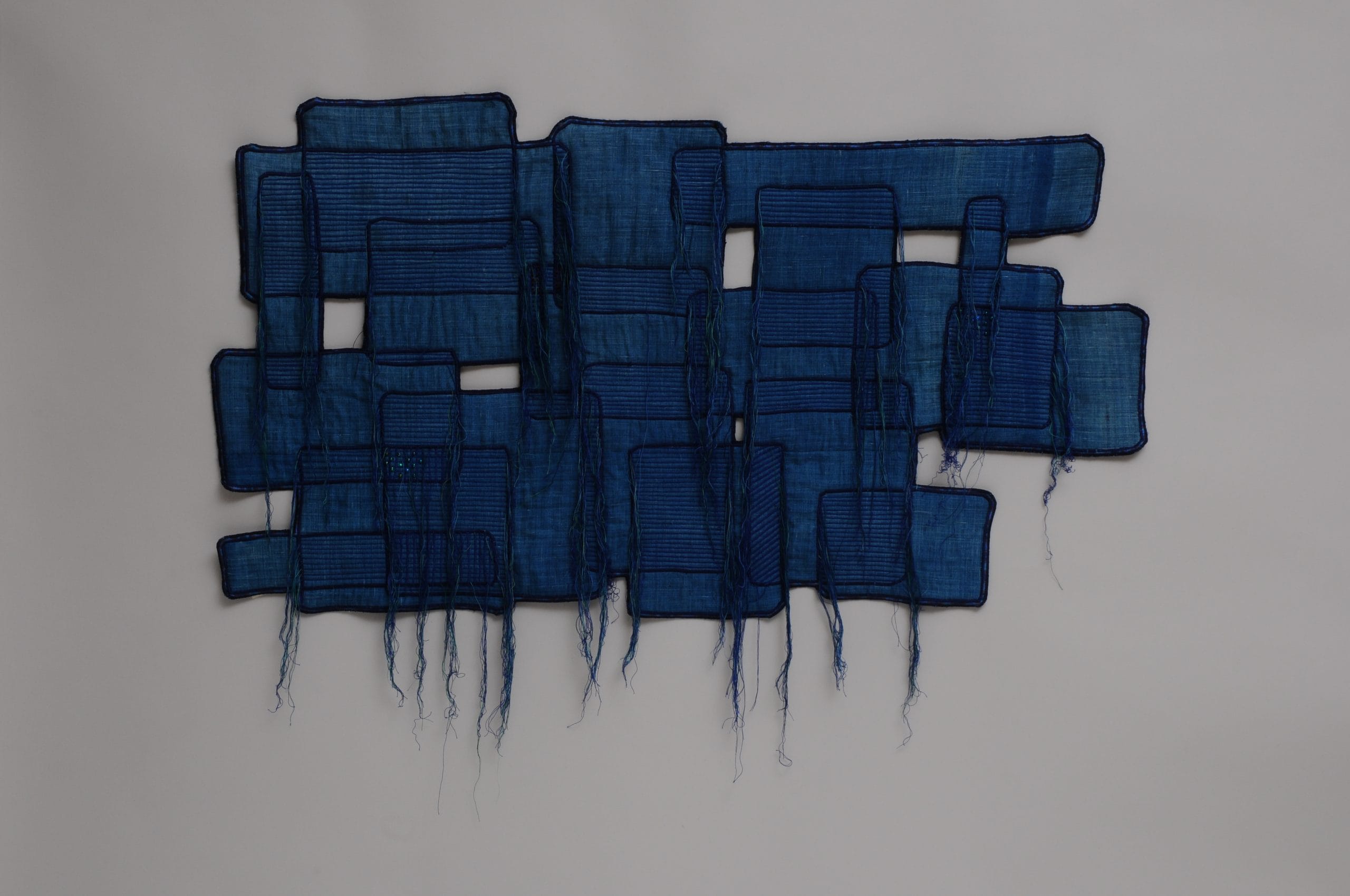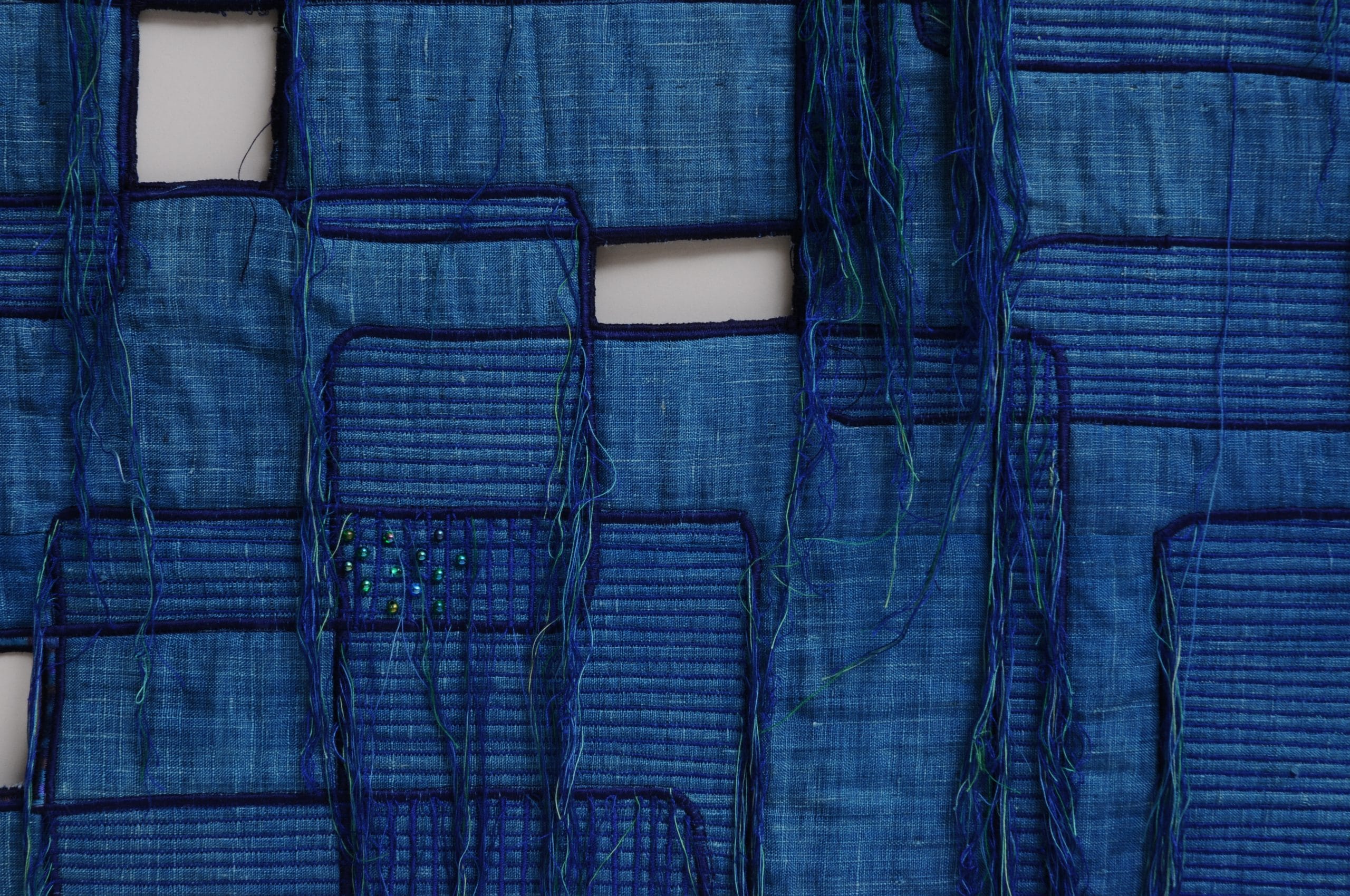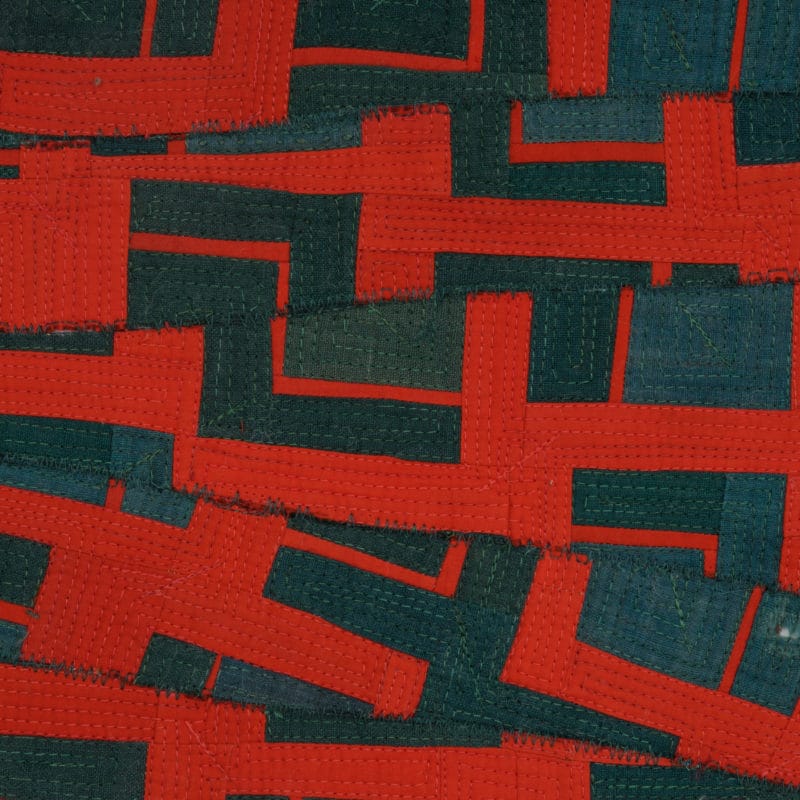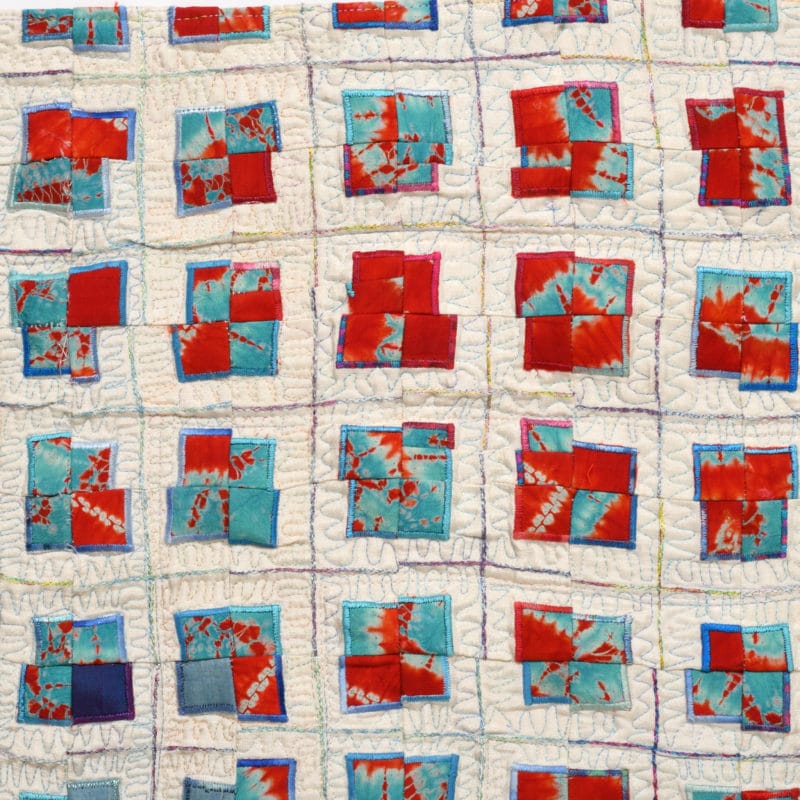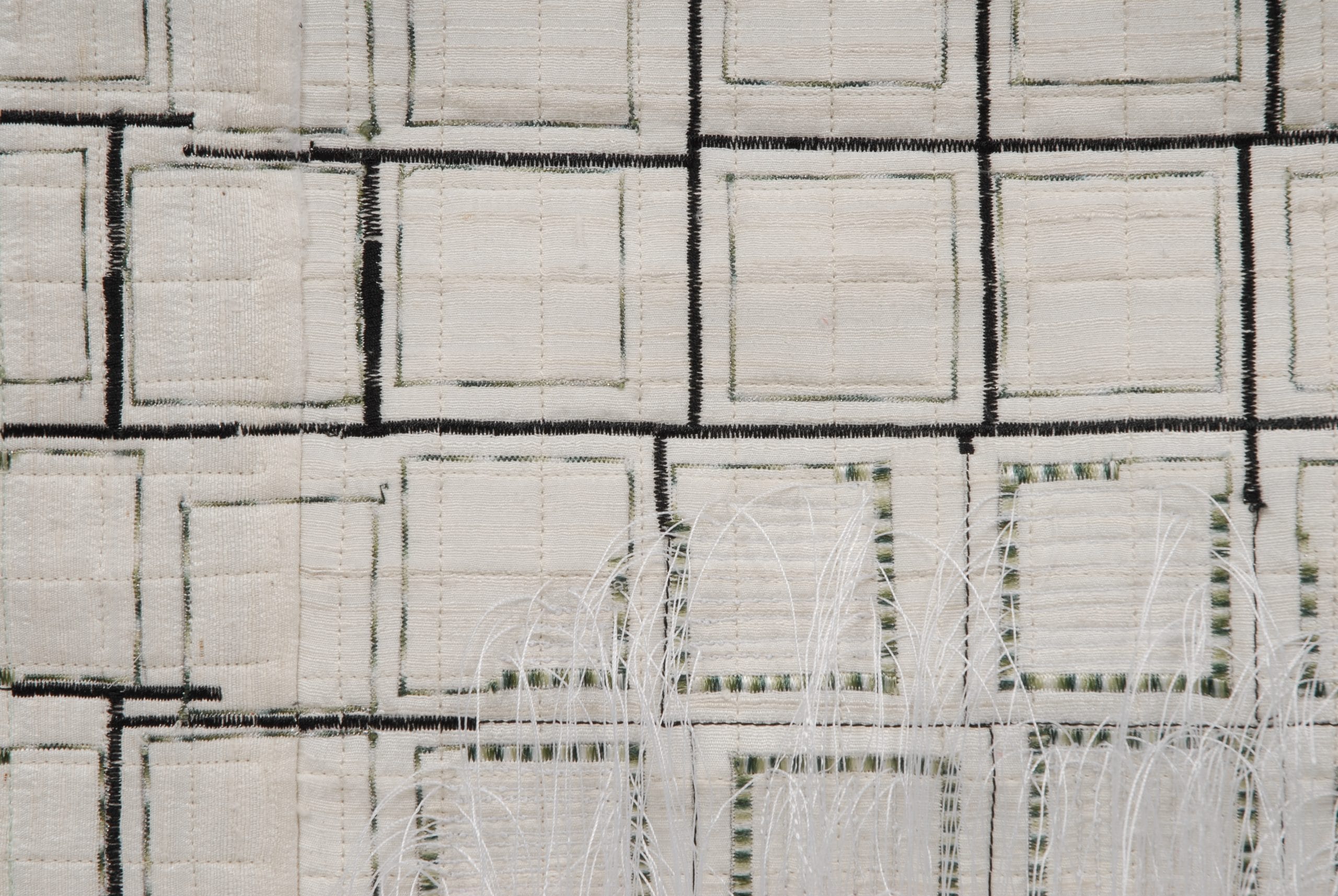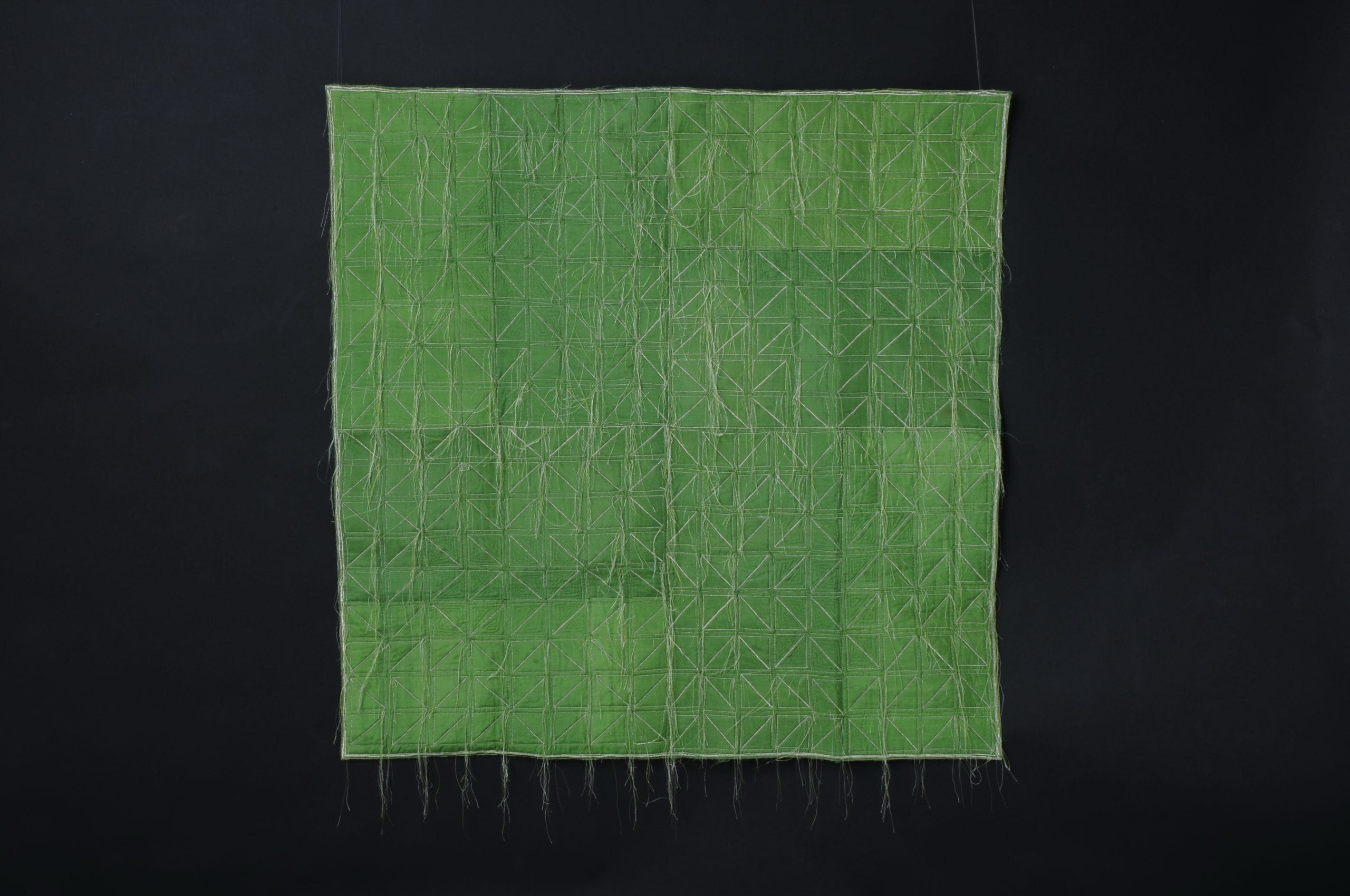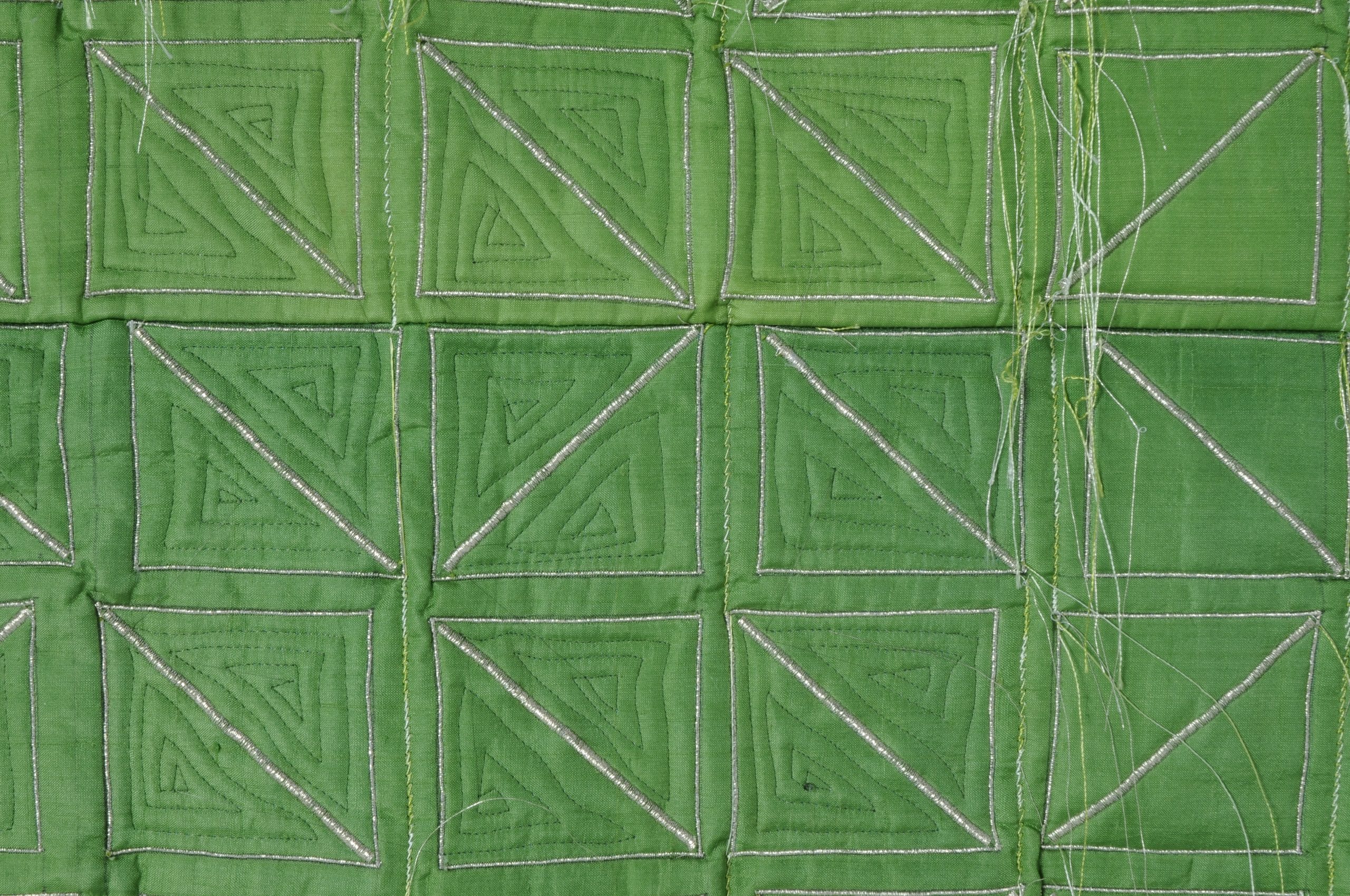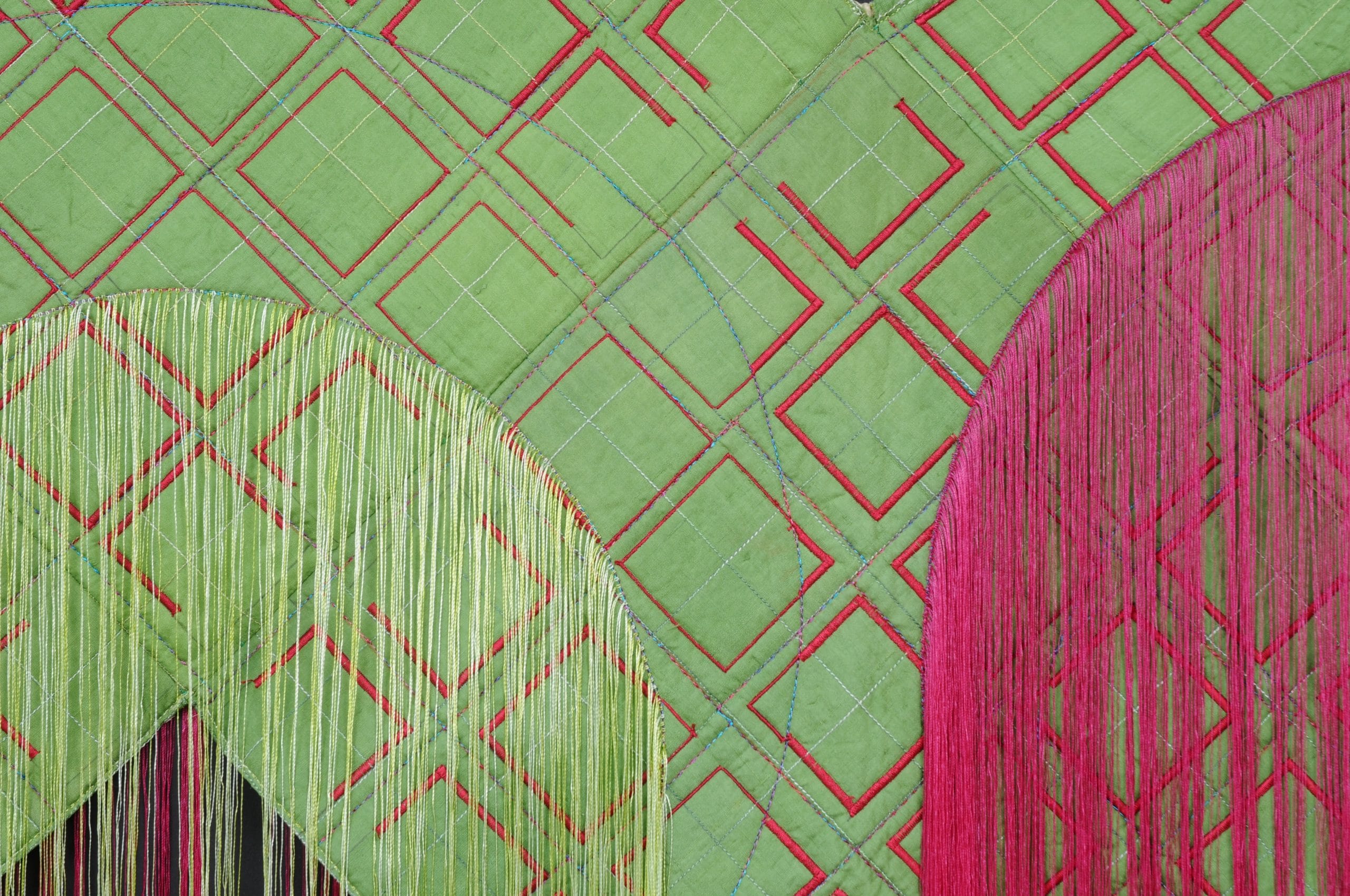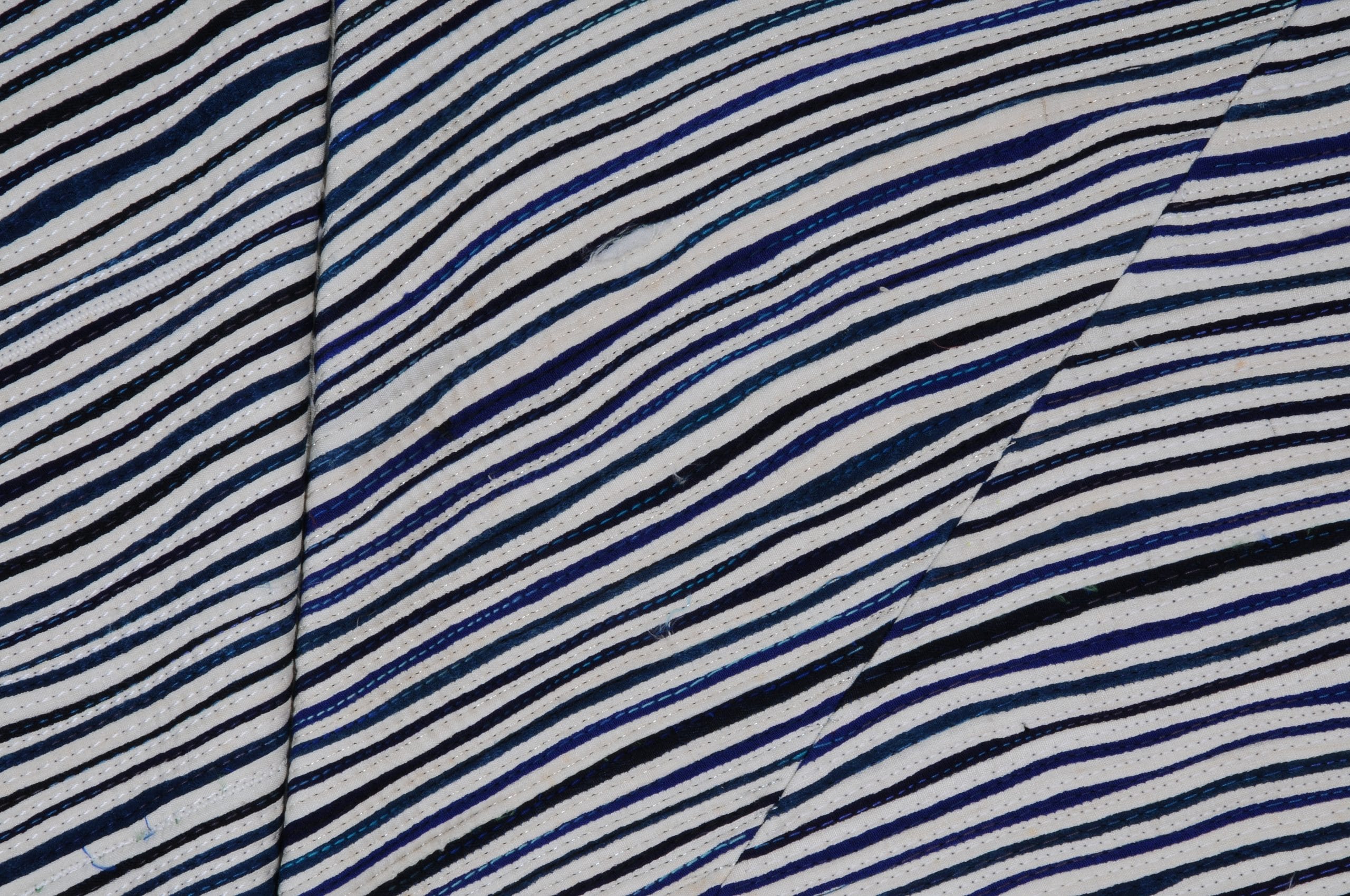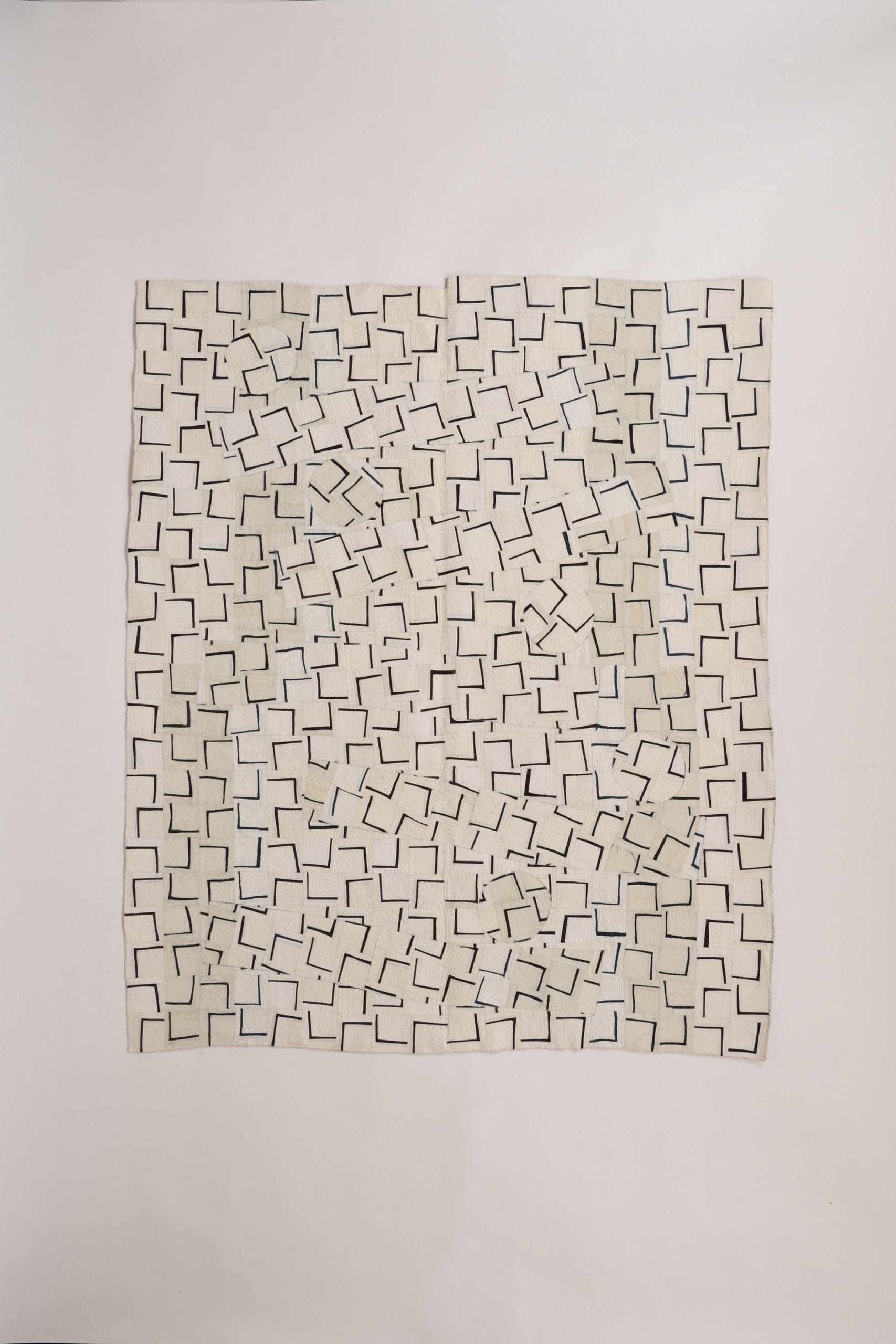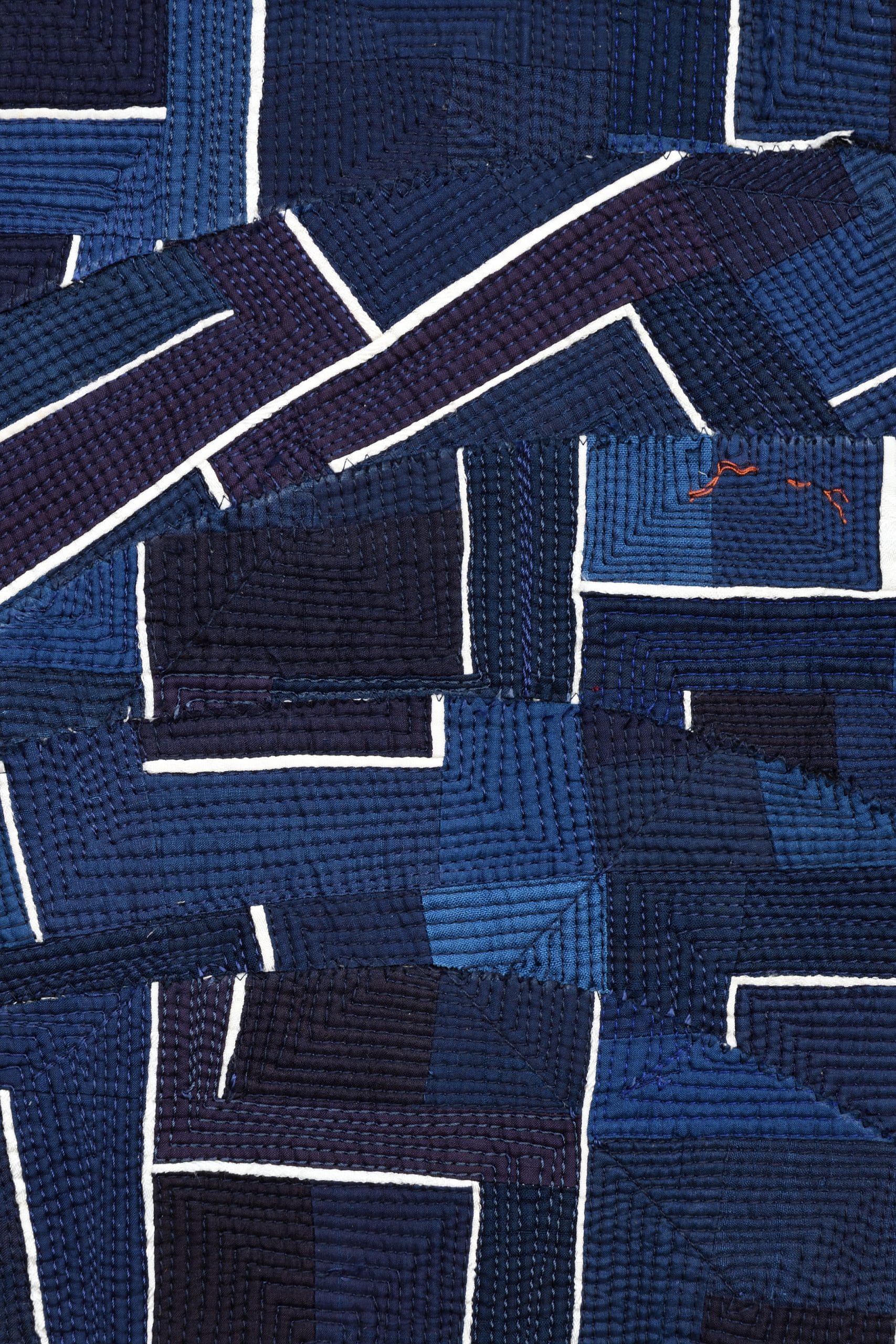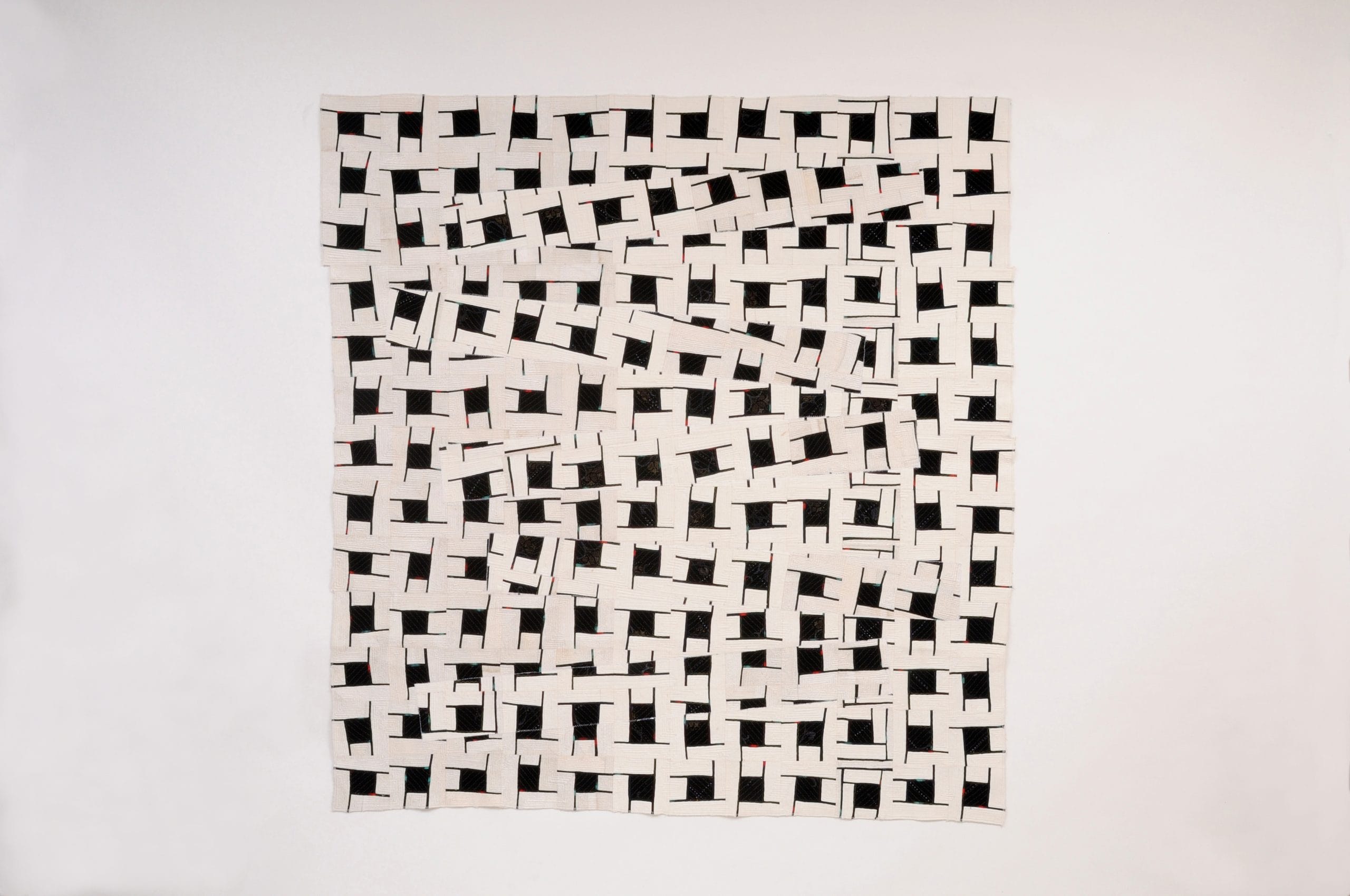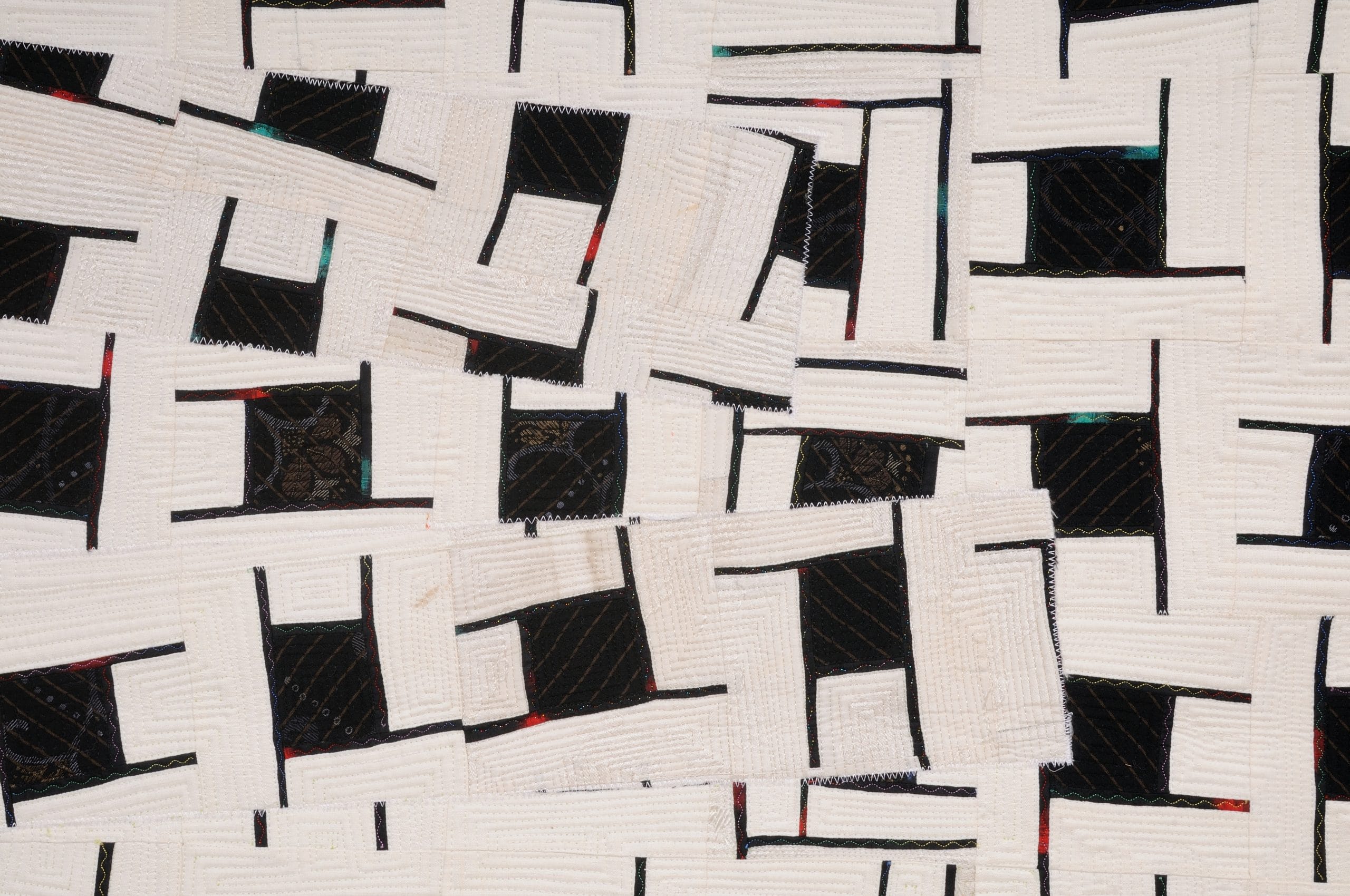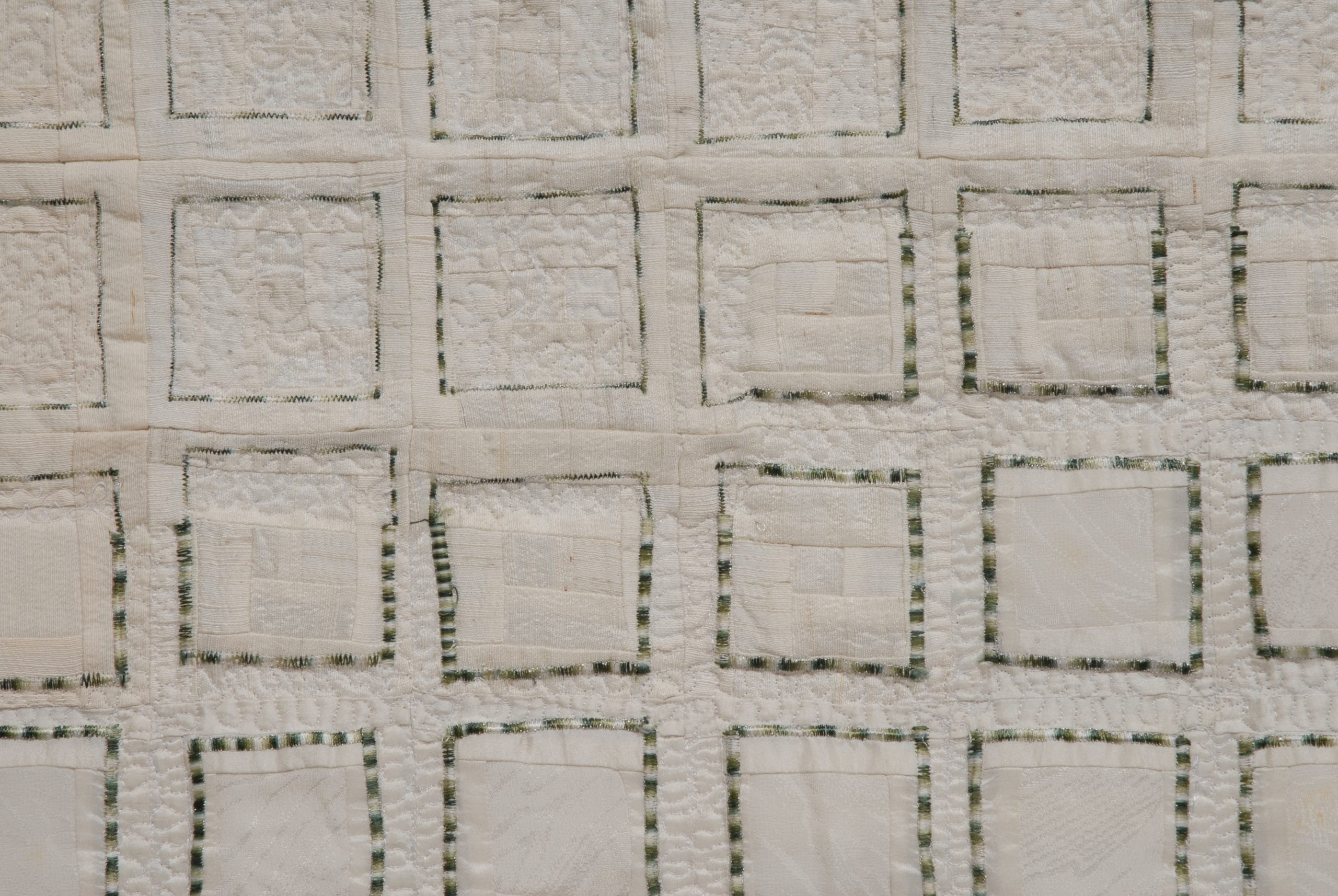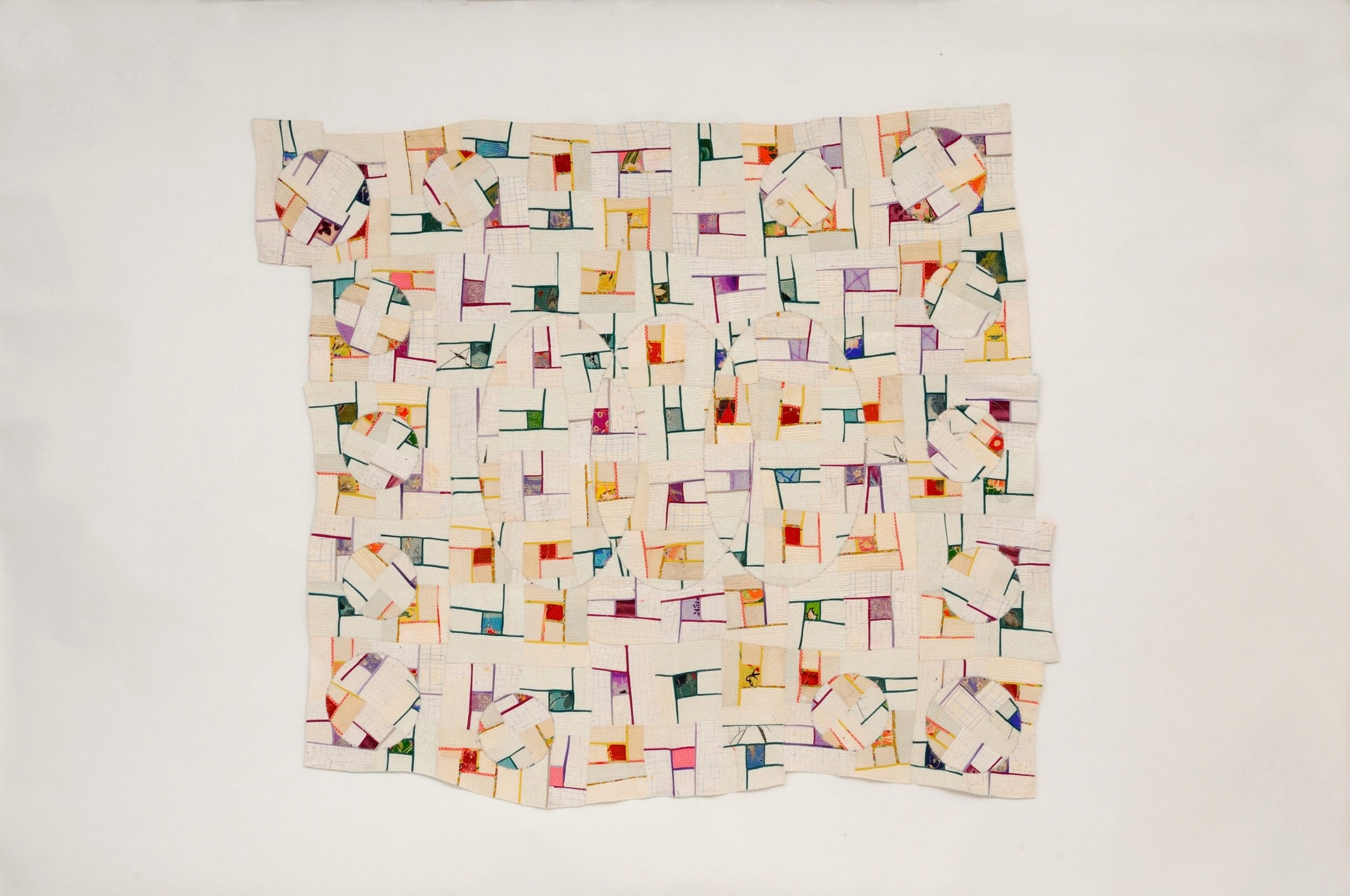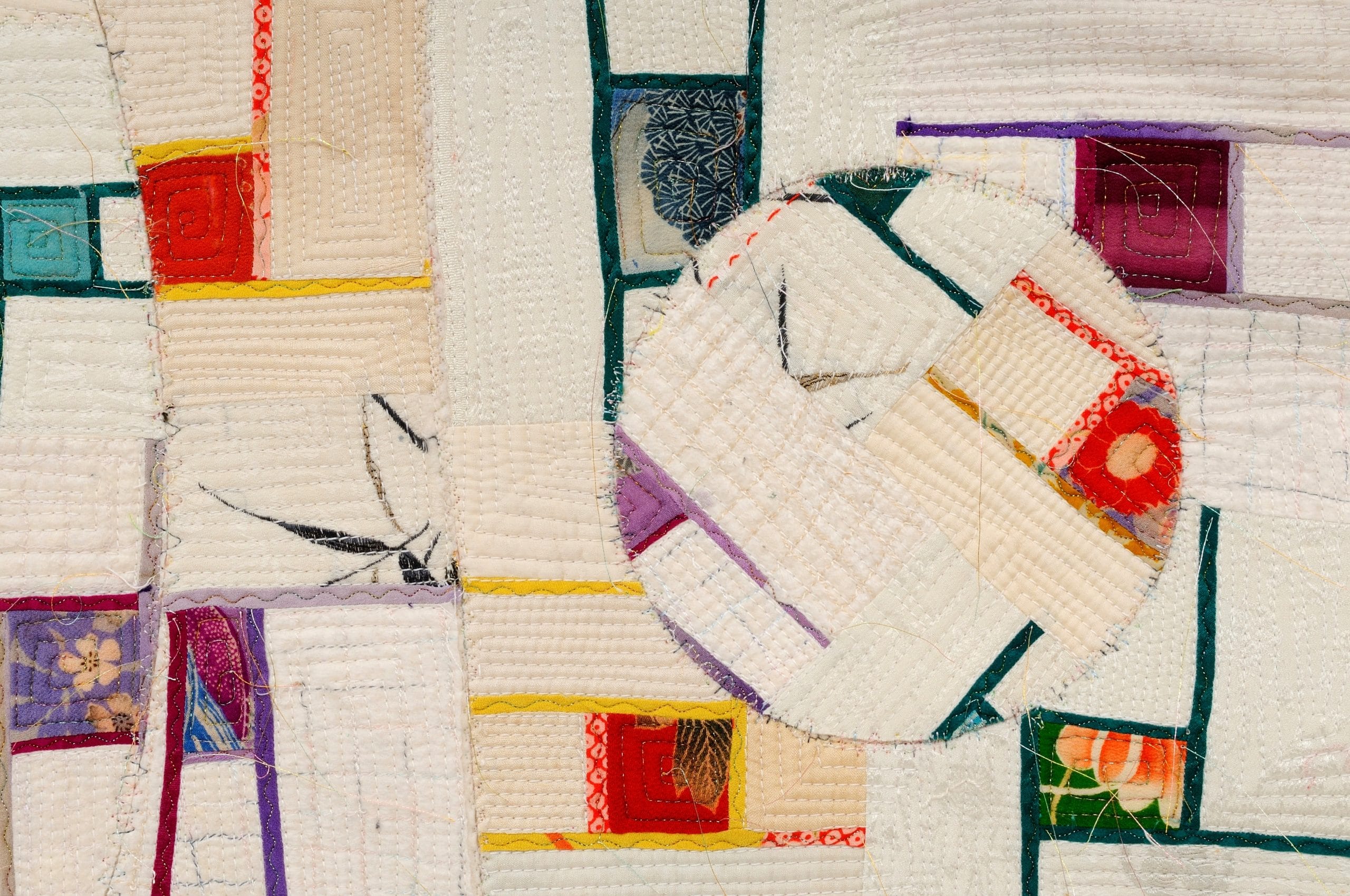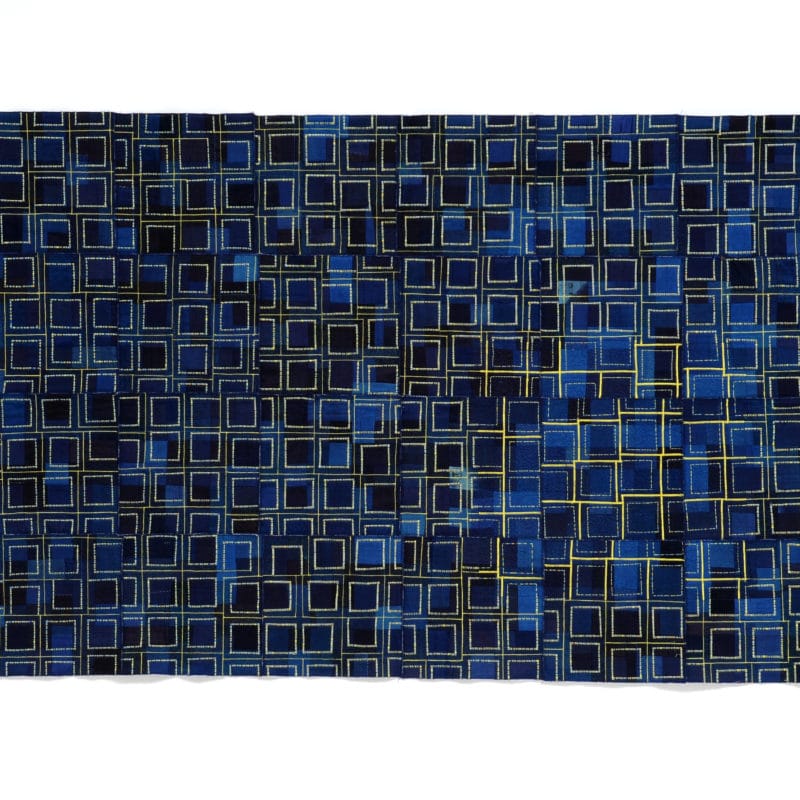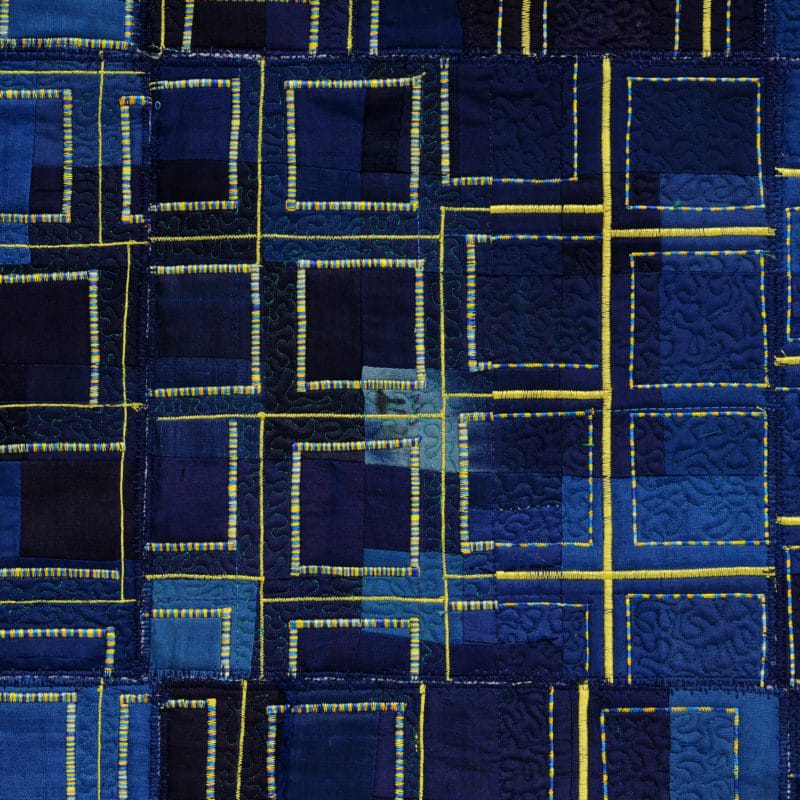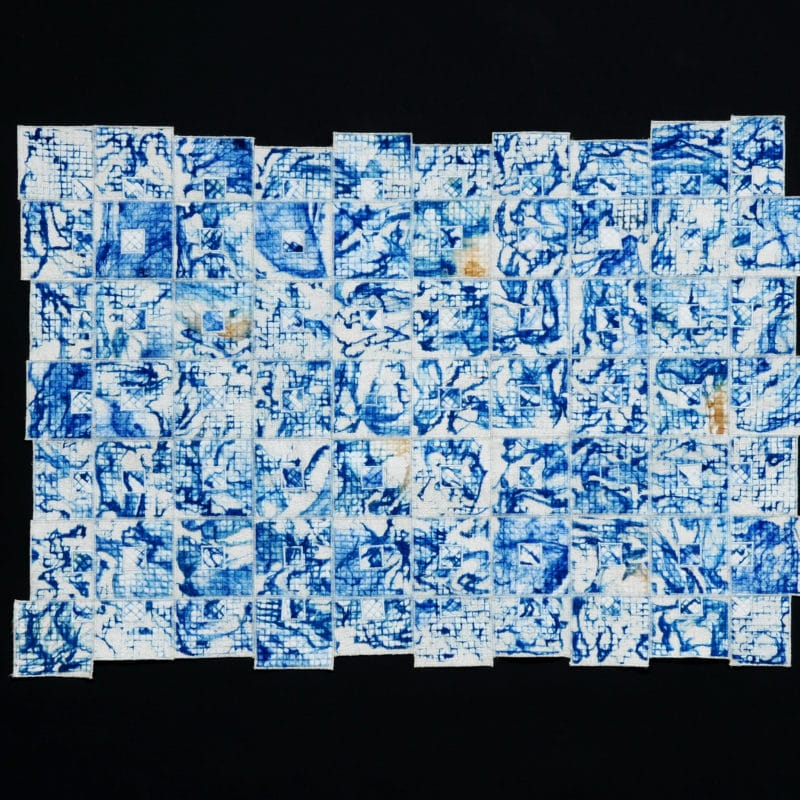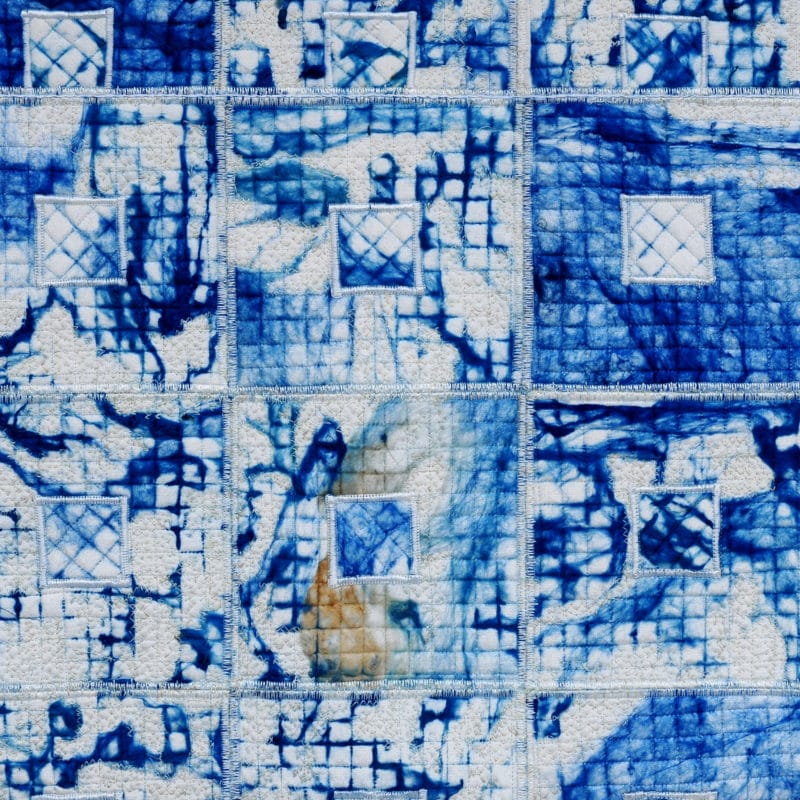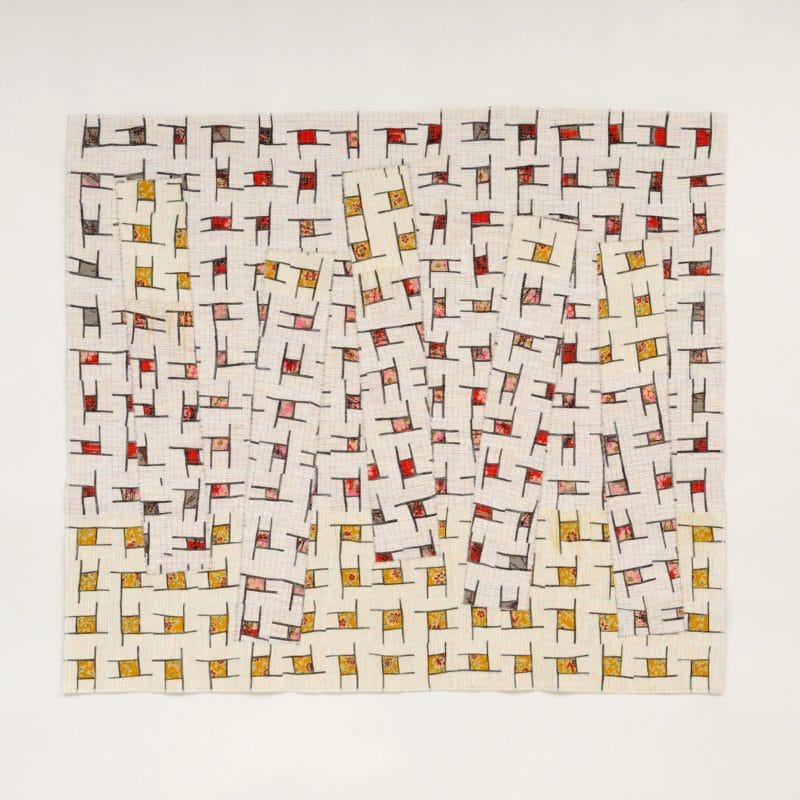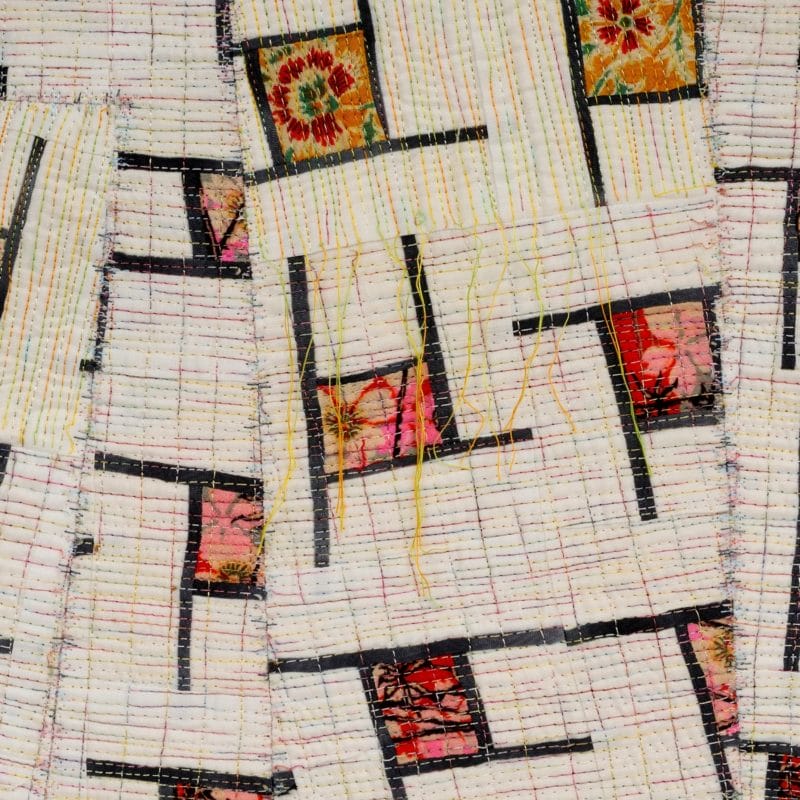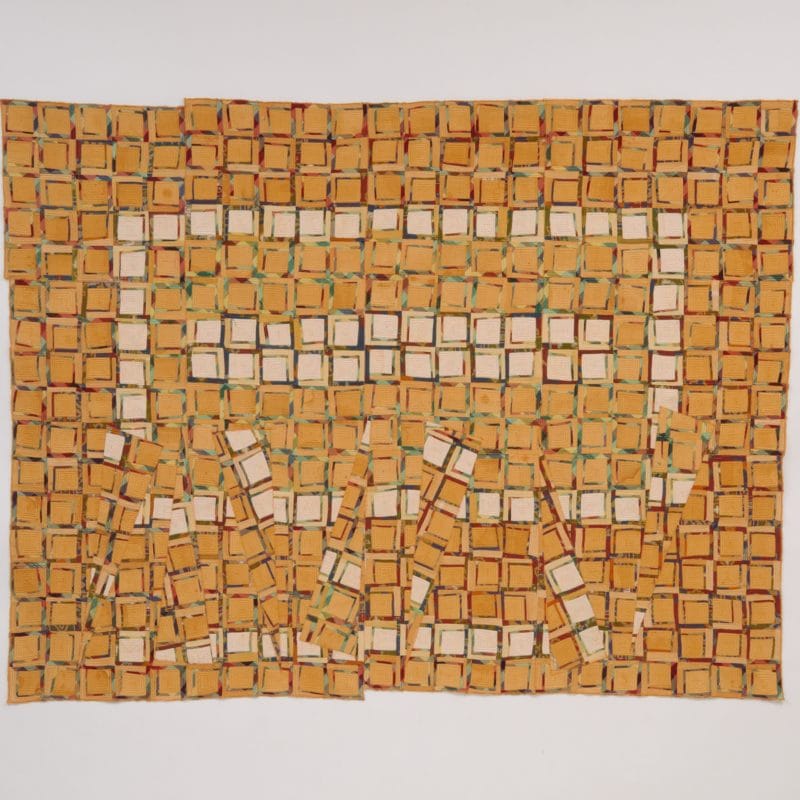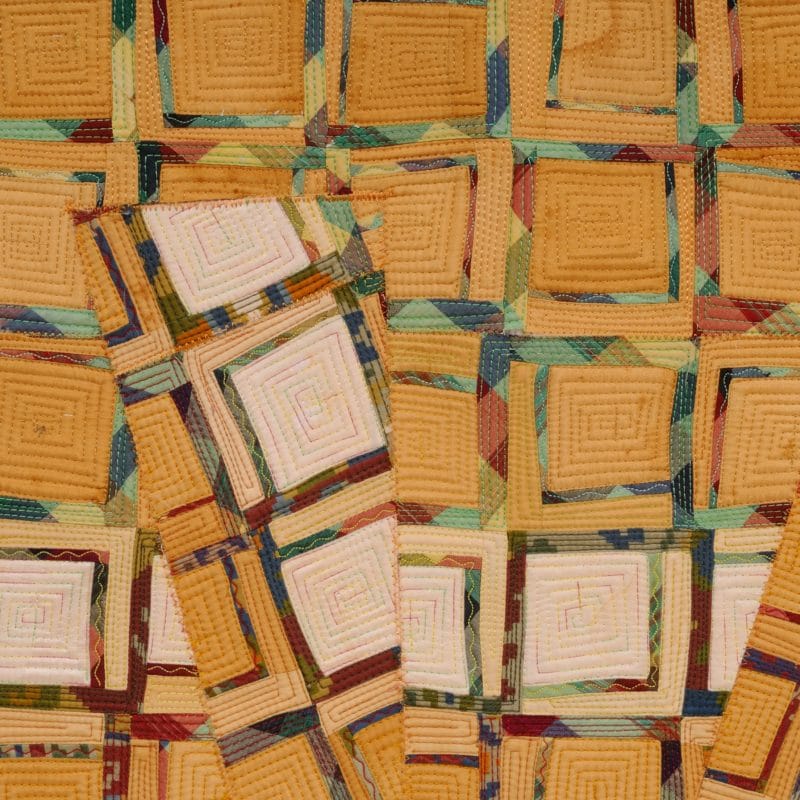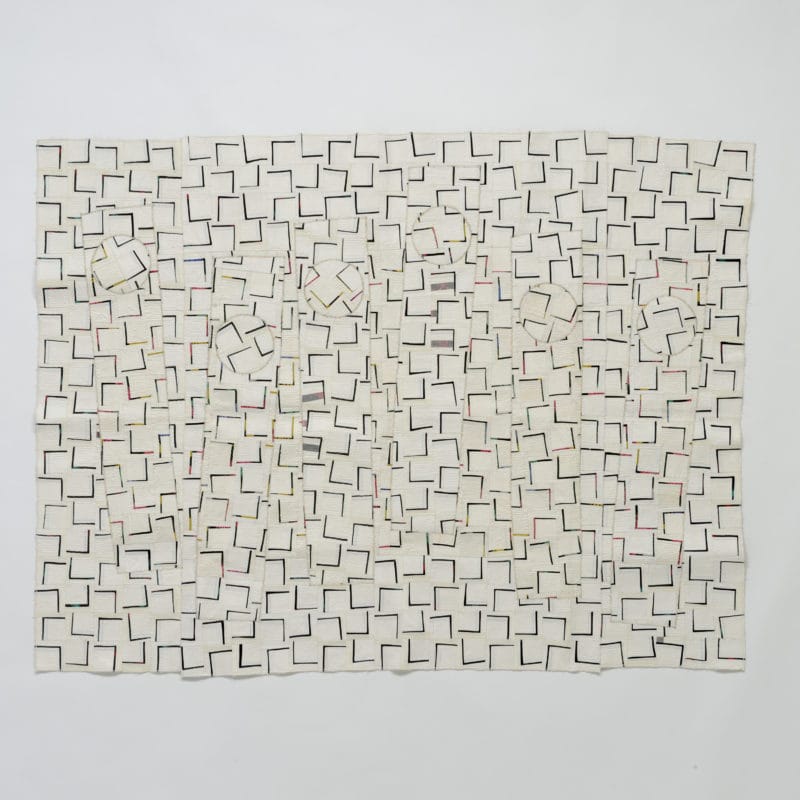The apparent simplicity of Harue Konishi’s quilts
“SYO #84-detail”, copyright Harue Konishi

Often behind an effect of simple linearity there are long hours of work and design, because it takes great skill, talent and experience for a complex work to look simple.
Harue Konishi is a Japanese textile artist who creates geometric quilts characterized by an articulated and rich design of multiple unexpected details that derive from a long and accurate designing work and creative ability.
The artworks of Harue participated in prestigious contests such as the Quilt National in Ohio (USA) and the Quilt Nihon Exhibition in Tokyo (Japan), receiving awards and premiums. Harue also exhibited in a number of solo and group exhibitions always in Japan and in the United States.
Here are the links to her social networks and website
http://harue524.wixsite.com/art-quilt-8524/home
“ I use old Japanese Kimono fabric that has been kept in my house for over 60 or 70 years for my quilts. Using washed out fabric and fabric that has been mended carefully by people in the past gives me great pleasure because it feels like the old fabric is speaking to me.
I mainly use Japanese fabric made of silk. I try to express depth and dimension through the repetition of simple design in my quilts. Even if my creation involves a complex process based on elaborate calculation and experiment, I try not to show the complexity in my work and try to make it appear simple. Because I believe my own way of life is reflected in the base of my creation.
Life tends to appear simple but is in fact a complex mix of many factors, and a simple life is attained by processing such factors.
I will keep making quilts as I continue to reflect on my way of life”.
Harue, why do you choose textiles as your medium of expression? Can you tell us about the path that led you to become a textile artist?
When I was a student, I was leading oil paintings, but I didn’t get used to it.I have always loved playing with cloths, and I always felt that needles, threads, and cloths were always there. I think I was caught in the mysterious charm of old cloth.
What are your sources of inspiration? How do you choose the subjects of your works? Are there artists or artistic currents that inspire you?
The source of inspiration comes from looking at nature.The power of nature is always strong and simple.It is very important for me to say that this is simple.
Can you tell us something about your artwork SYO #39?
This work has the same shape as SY0 # 32, but with a different color.I wanted to express the space I felt and the flow of time by hanging the thread from the front and back.
Is there one of your textile works that represents you more and to which you feel more attached? On the contrary, among the many works you have created over the years, is there one in which you no longer recognize yourself and that you feel far from your current artistic style?
SYO # 2 and SYO # 58 are the ones that I am most attached to.
I believe that every artist has experienced moments of joyful creative energy and phases of frustration and tiredness during his career. Can I ask you how you dealt with the moments of difficulty?
I try to make a small quilt to change my mood when production doesn’t progress. Also, I think that the production is not progressing when we are storing energy for the next stage.
How do you plan a new artwork? Improvisation, randomness, experimentation, study, rules, design. Which of these aspects has an essential or prevailing role in your creative process?
I think that new productions will probably continue in the same way as before.More simple but complicated.I think that the most important thing in the creative process is the sensitivity of everything.
Can you describe the development of one of your art quilts? Can you tell us something about the techniques you use?
Regarding the development of art quilts, I think it is important to produce with more free shipping, without being caught in the conventional form.
I make it with a sewing machine.
How has your work evolved in terms of style and expression? What are the differences between the first and the most recent work?
I started with a traditional quilt, but from a certain point, everyone wanted to create a work that anyone could see as a quilt of Harue Konishi. In the early days, we used a variety of colors, but now colors and designs are becoming very simple.
What are you working on right now?
I am thinking of a design for the next work.
Even if the production process is complicated, the work is completed and the work is very simple. I will continue to pursue complex and simple works.

